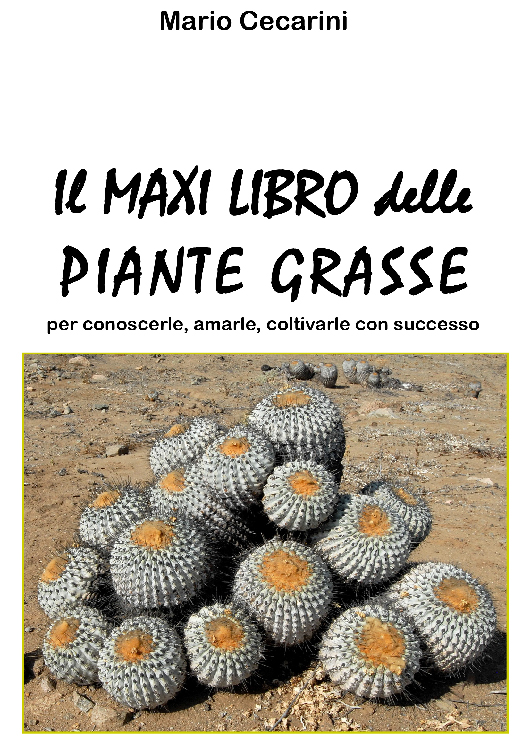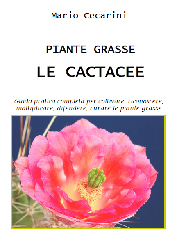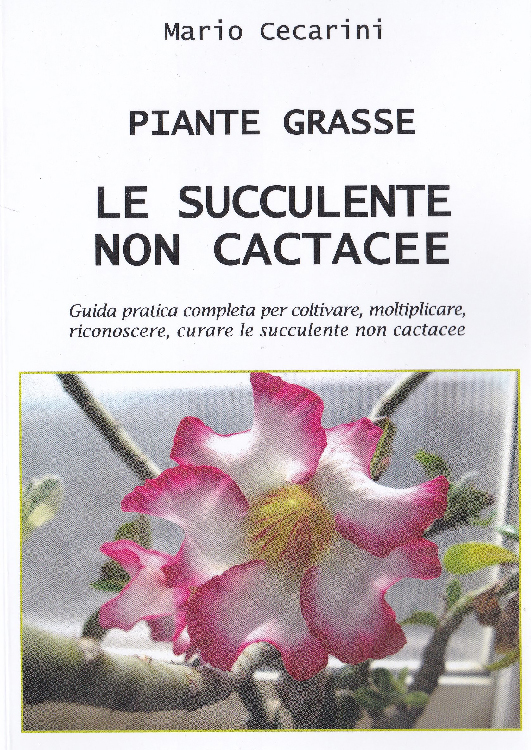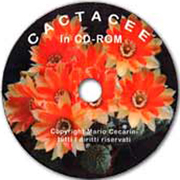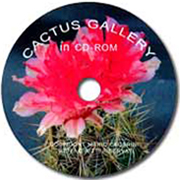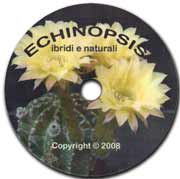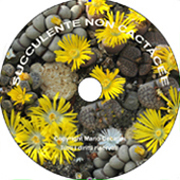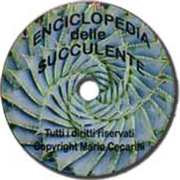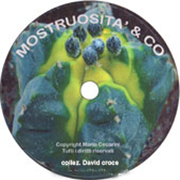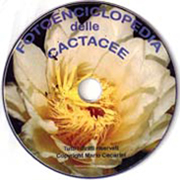|
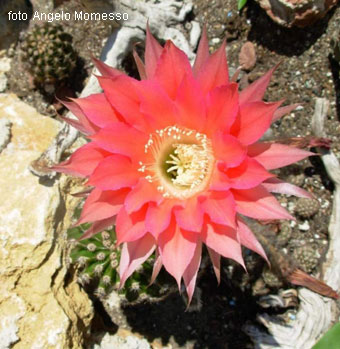 The highest concentration of succulents is found at a latitude between 40° north and 40° South of the Equator. Some, however, may also occur as far north as the 56th parallel while the southernmost location is at about 50° south latitude. This large and geomorphologically diverse belt consists mainly of arid lands characterised by long dry spells interspersed with occasional rainy periods or desert regions where fog and light drizzle are quite common, like the coastal strip of Namibia and the plateau lying between the Andes and the pacific coast in South America but it also includes humid and hot tropical rainforests, steppes, savannahs, highlands and mountain ranges. A few species or genera, thanks to their vigour and adaptability, are able to colonize vast territories, as is the case with the widespread genus Opuntia; others are found only in more restricted areas. Humans played a fundamental part in the diffusion of certain species across different continents, helped by the fact that these extraordinary plants can often cope with adverse conditions. The highest concentration of succulents is found at a latitude between 40° north and 40° South of the Equator. Some, however, may also occur as far north as the 56th parallel while the southernmost location is at about 50° south latitude. This large and geomorphologically diverse belt consists mainly of arid lands characterised by long dry spells interspersed with occasional rainy periods or desert regions where fog and light drizzle are quite common, like the coastal strip of Namibia and the plateau lying between the Andes and the pacific coast in South America but it also includes humid and hot tropical rainforests, steppes, savannahs, highlands and mountain ranges. A few species or genera, thanks to their vigour and adaptability, are able to colonize vast territories, as is the case with the widespread genus Opuntia; others are found only in more restricted areas. Humans played a fundamental part in the diffusion of certain species across different continents, helped by the fact that these extraordinary plants can often cope with adverse conditions.
By and large, the different habitats can be divided into the following four categories:
- pseudo-deserts and subdeserts;
- steppes and prairies;
- mountainous land;
- tropical and subtropical forests.
The first environment is distinguished by prolonged droughts punctuated with erratic heavy downpours (total rainfall between 500 and 800 mm. per year); regions receiving less than 250 mm. of rain per year are true deserts, such as the Sahara, that are inhospitable and cannot sustain the life of plants, not even succulents. This is not quite true when it comes to deserts like those of Namibia, Chile and Peru where the supply of air moisture ensured by the frequent fogs compensates for the scarcity of rain. Many genera of cactus live here: Oroya, Borzicactus, Chamaecereus, Eriosyce, Eulychnia, Haageocereus, Neoraimondia, Oreocereus, Rebutia, just to mention a few.
Another habitat is found in the vast plains and highlands like those of Mexico and southwestern US (Texas, New Mexico, Arizona), where Cactaceae like Mammillaria and Echinocereus generally predominate; some plants, for example Aylostera, Echinofossulocactus, Weingarthia, grow on the bare rock of mountain slopes. This area is characterized by great diurnal and annual temperature variation and here snow may also occur. The Central States of Mexico are home to a great variety of species, among which Ariocarpus, Atzekium, Pelecyphora and Obregonia are the most prized by collectors. The well-known Cephalocereus senilis grow in the State of Hidalgo while Lophocereus schottii and Machaerocereus eruca are native to Baja California; Pachycereus and Lemaireocereus may be found in other regions.
As we proceed towards the Equator we encounter the equatorial rainforests, typical of Central America, Guyana, the Amazon region and the West Indies, where cacti grow on trees as epiphytic plants, yet not parasitic, developing their roots in the leaf litter that accumulates on horizontal branches or at the bifurcation of trunks. Here species like Selenicereus, Hylocereus, Epiphyllum, Hoya, Rhipsalis and Schlumbergera thrive, growing aerial roots that can absorb moisture from the humid air when there is lack of rain. Melocactus are native to the West Indies and require warm temperatures throughout the year.
Moving further south towards Venezuela, Equador, Peru, Bolivia, Chile and western regions of Northern Argentina we come across many genera that inhabit North America as well, though represented by different species; here Cerei are predominant, particularly those with dense hairs like Espostoa and Oreocereus. Matucana, Mila, Oroya grow on the high-altitude plains. In the Chilean Andes and the Atacama desert of Chile we can find genera like Browningia, Eulychinia, Neoporteria, Copiapoa. The Andinian plants are known to be quite difficult in cultivation, especially the ones from Peruvian and Chilean mountains which grow at great elevation under high light levels; yet, the almost constant cloud cover prevents their epidermis from scorching while if grown where sunshine amounts are greater, even at higher latitudes, they can easily get burned. Steppes and prairies are home to many genera that are well-known to cactus enthusiasts such as Cleistocactus, Notocactus, Gymnocalycium, Trichocereus, Parodia, Rebutia, Lobivia and Echinopsis. On Brazilian highlands we encounter Cereus, Harrisia, Trichocereus; in Southern Brazil as well as Paraguay and Uruguay again we might come across many Cerei while epiphytic cacti inhabit coastal forests. The Pampas is the natural habitat of Trichocereus, Harrisia, Cleistocactus, Chamaecereus, Echinopsis, Gymnocalycium, Notocactus.
Generally speaking, we can say that Cactaceae come from the Americas in the same way that the majority of other succulents comes from Africa although the latter may also occur in Europe, Asia and Australia. Some genera like Aloe, Gasteria and Haworthia are unique to Africa, similarly to Pelargoniums though a few species of this genus can also be found outside the continent. Most succulents and cacti are concentrated mainly across the tropical and subtropical belts throughout the world but they occur in many widely scattered places so no real attempt has ever been made to give an exhaustive description of all these different habitats.
Here we find Euphorbias, growing almost over the entire area thanks to the great diversity of species. The range of the Asclepiadaceae family stretches from the Himalayan mountain range to the Far East, reaching as far as Australia although some genera are unique to Africa, as is the case with Huernia, Hoodia, Ceropegia, Caralluma and Stapelia. Crassulaceae grow in South Africa, Namibia, Madagascar but also in the U.S., Mexico as well as Europe (particularly Sedum and Sempervivum). The various species of Agave are native to the Americas, along with Yucca, Echeveria and Duddleya. Mexico is home to Pachyphytum, Sedum and Idria columnaris, among others. Epiphytic and non-epiphytic Bromeliaceae inhabit humid and warm places of the American continents. Eastern Africa is the habitat of many species of Euphorbia, Aloe and Stapelia; some Euphorbias are also found in Madagascar together with Kalanchoe. Monanthes and Aeonium are from the Canary Islands.
On the whole we can say that Anacardiaceae occur in the tropical and subtropical belts of the northern hemisphere, Apocynaceae, Burseraceae, Commelinaceae, Rubiaceae and Sterculiaceae mainly in the tropics, Bombacaceae in tropical and subtropical regions of Africa, Madagascar, the Indian Ocean and Australia and finally Compositae, Convolvulaceae, Liliaceae, Oxalidaceae, Passifloraceae, Vitaceae, Pedaliaceae mostly in Africa.
The South African Veld, with its great concentration and variety of succulent families and species is the paradise of the Mesembryanthemaceae. These plants occur from sea level to 3000 metres of altitude (9800 ft) and live almost completely buried in the ground except during the wet season when they spring back to life bringing a burst of colour when in bloom. Within South Africa are to be found a variety of climates and diverse topography ranging from areas with a winter rainy season to savannahs with wet summers, from jungles to prairies, from lowlands to high-altitude plains and finally from snowy peaks to mountain forests.
On the mountains north of Cape Town we encounter a great diversity of genera and species including Aloe, Cotyledon, Pelargonium, Crassula, Othonna, Haworthia, Euphorbia, Stapelia, Gasteria and Conophytum. |








 The highest concentration of succulents is found at a latitude between 40° north and 40° South of the Equator. Some, however, may also occur as far north as the 56th parallel while the southernmost location is at about 50° south latitude. This large and geomorphologically diverse belt consists mainly of arid lands characterised by long dry spells interspersed with occasional rainy periods or desert regions where fog and light drizzle are quite common, like the coastal strip of Namibia and the plateau lying between the Andes and the pacific coast in South America but it also includes humid and hot tropical rainforests, steppes, savannahs, highlands and mountain ranges. A few species or genera, thanks to their vigour and adaptability, are able to colonize vast territories, as is the case with the widespread genus Opuntia; others are found only in more restricted areas. Humans played a fundamental part in the diffusion of certain species across different continents, helped by the fact that these extraordinary plants can often cope with adverse conditions.
The highest concentration of succulents is found at a latitude between 40° north and 40° South of the Equator. Some, however, may also occur as far north as the 56th parallel while the southernmost location is at about 50° south latitude. This large and geomorphologically diverse belt consists mainly of arid lands characterised by long dry spells interspersed with occasional rainy periods or desert regions where fog and light drizzle are quite common, like the coastal strip of Namibia and the plateau lying between the Andes and the pacific coast in South America but it also includes humid and hot tropical rainforests, steppes, savannahs, highlands and mountain ranges. A few species or genera, thanks to their vigour and adaptability, are able to colonize vast territories, as is the case with the widespread genus Opuntia; others are found only in more restricted areas. Humans played a fundamental part in the diffusion of certain species across different continents, helped by the fact that these extraordinary plants can often cope with adverse conditions.